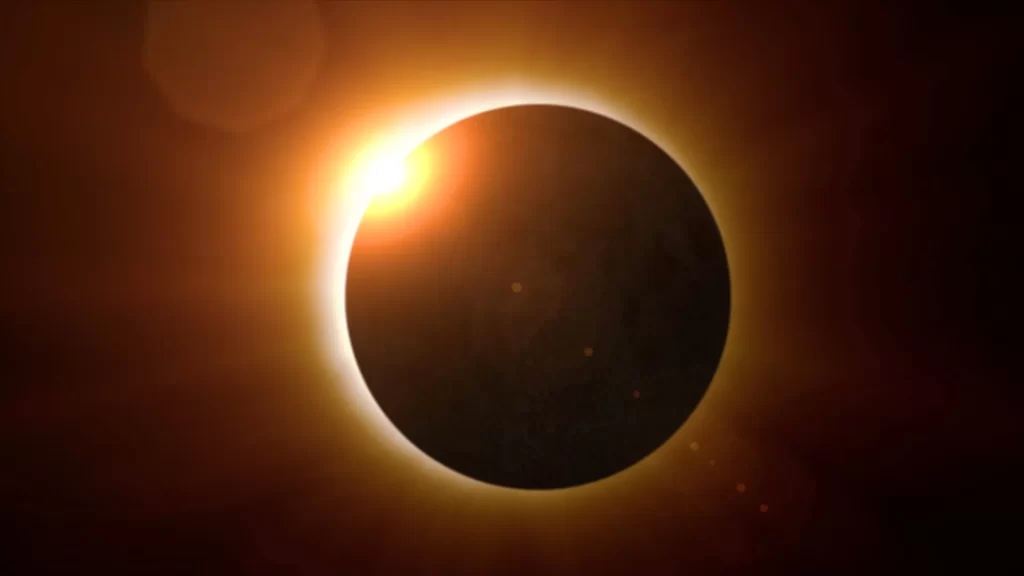The 2024 Solar Eclipse in Florida
On April 8, 2024, a partial solar eclipse will be visible across the state of Florida. While Florida will not experience a total solar eclipse, where the moon completely covers the sun, residents will be able to see a partial eclipse with varying degrees of coverage depending on their location.
Key Highlights
- The partial solar eclipse will begin in Florida around 12:35 p.m. CDT (1:35 p.m. EDT) on April 8, 2024.
- The eclipse will reach its maximum coverage in most of Florida between 1:55 p.m. CDT (2:55 p.m. EDT) and 3:05 p.m. EDT.
- The eclipse will end in Florida between 3:13 p.m. CDT (4:13 p.m. EDT) and 4:20 p.m. EDT, depending on location.
- The maximum coverage of the sun by the moon will range from around 46% in South Florida to over 76% in the Panhandle region.
- Weather conditions are expected to be generally favorable for viewing the eclipse across much of the state, with some high clouds potentially obscuring the view in certain areas.
Eclipse Visibility Across Florida
The visibility and timing of the 2024 partial solar eclipse will vary depending on your location within Florida. Here are the key details for several major cities:
| Location | Start | Maximum Coverage | End | Maximum Coverage |
|---|---|---|---|---|
| Pensacola | 12:35 p.m. CDT | 1:55 p.m. CDT (76.6%) | 3:13 p.m. CDT | 2 hours 37 minutes |
| Fort Walton Beach | 12:37 p.m. CDT | 1:56 p.m. CDT (75.4%) | 3:14 p.m. CDT | 2 hours 36 minutes |
| Panama City | 12:38 p.m. CDT | 1:57 p.m. CDT (72.2%) | 3:14 p.m. CDT | 2 hours 36 minutes |
| Tallahassee | 1:42 p.m. EDT | 3:00 p.m. EDT (70.1%) | 4:16 p.m. EDT | 2 hours 34 minutes |
| Jacksonville | 1:48 p.m. EDT | 3:05 p.m. EDT (65.2%) | 4:20 p.m. EDT | 2 hours 32 minutes |
| Gainesville | 1:45 p.m. EDT | 3:03 p.m. EDT (63.4%) | 4:18 p.m. EDT | 2 hours 32 minutes |
| Orlando | 1:46 p.m. EDT | 3:03 p.m. EDT (57.0%) | 4:15 p.m. EDT | 2 hours 29 minutes |
| Miami | 1:47 p.m. EDT | 3:01 p.m. EDT (46.2%) | 4:13 p.m. EDT | 2 hours 26 minutes |
For a more detailed look at the eclipse visibility and timing in your specific location, you can use this interactive map from the National Oceanic and Atmospheric Administration (NOAA).
Weather Outlook
The weather forecast for April 8, 2024, in Florida is generally favorable for viewing the solar eclipse. However, some high-level clouds may occasionally obscure the view in certain areas.According to meteorologists, the farther south and west you are in Florida, the clearer the skies are likely to be. The Panhandle region and Southwest Florida are expected to have the best viewing conditions, with mostly clear skies.Central and North-Central Florida may see some high-level clouds passing through, but the eclipse should still be visible for the most part. The east coast of Florida, including the Miami area, may have a bit more cloud cover, but the eclipse should still be partially visible.Regardless of location, it’s important to use proper eye protection when viewing the solar eclipse, as looking directly at the sun can cause serious and permanent eye damage.
Safety Precautions
Viewing a solar eclipse requires special precautions to protect your eyes. Looking directly at the sun, even during a partial eclipse, can cause permanent eye damage, including blindness.To safely view the 2024 solar eclipse in Florida, you should use approved solar eclipse glasses or a handheld solar viewer. These specialized glasses and viewers filter out the harmful UV and infrared radiation from the sun, allowing you to look directly at the eclipse without risking your eyesight.Regular sunglasses, even very dark ones, are not a safe alternative and should not be used to view the eclipse. Only use products that are specifically designed and certified for safe solar eclipse viewing.Additionally, you should never look at the sun through a camera, telescope, binoculars, or other optical devices without a proper solar filter in place. This can also lead to eye damage.By taking the necessary safety precautions, you can enjoy the stunning sight of the 2024 partial solar eclipse in Florida without putting your vision at risk.
FAQ
Q: What time will the solar eclipse be visible in Florida on April 8, 2024?The partial solar eclipse will begin in Florida around 12:35 p.m. CDT (1:35 p.m. EDT) on April 8, 2024. The eclipse will reach its maximum coverage in most of Florida between 1:55 p.m. CDT (2:55 p.m. EDT) and 3:05 p.m. EDT. The eclipse will end in Florida between 3:13 p.m. CDT (4:13 p.m. EDT) and 4:20 p.m. EDT, depending on location.
Q: How much of the sun will be covered by the moon during the eclipse in Florida?The maximum coverage of the sun by the moon will range from around 46% in South Florida to over 76% in the Panhandle region. The exact percentage of coverage will depend on your location within the state.
Q: What is the best location in Florida to view the 2024 solar eclipse?The Panhandle region and Southwest Florida are expected to have the best viewing conditions, with mostly clear skies. Central and North-Central Florida may see some high-level clouds, but the eclipse should still be partially visible. The east coast of Florida, including the Miami area, may have a bit more cloud cover.
Q: Is it safe to look directly at the sun during the solar eclipse?No, it is never safe to look directly at the sun, even during a partial solar eclipse. Looking directly at the sun can cause permanent eye damage, including blindness. You must use approved solar eclipse glasses or a handheld solar viewer to safely view the eclipse.
Q: How often do solar eclipses occur in Florida?Solar eclipses, both total and partial, occur in Florida relatively infrequently. The last total solar eclipse visible from Florida was in 1970, and the next one is not expected until 2045. Partial solar eclipses, like the one in 2024, occur more often, but still only a few times per decade.



